Thingiverse
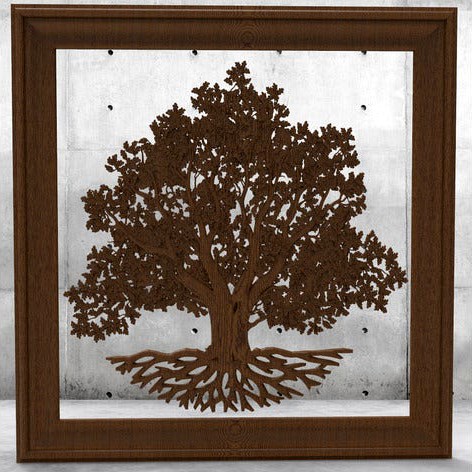
Yggdrasil oak tree for CNC by cncmodels4you
by Thingiverse
Last crawled date: 4 years ago
Yggdrasil
"The Ash Yggdrasil" (1886) by Friedrich Wilhelm Heine
Yggdrasil (from Old Norse Yggdrasill), in Norse cosmology, is an immense and central sacred tree. Around it exists all else, including the Nine Worlds.
Yggdrasil is attested in the Poetic Edda compiled in the 13th century from earlier traditional sources, and in the Prose Edda written in the 13th century by Snorri Sturluson. In both sources, Yggdrasil is an immense ash tree that is center to the cosmos and considered very holy. The gods go to Yggdrasil daily to assemble at their things, traditional governing assemblies. The branches of Yggdrasil extend far into the heavens, and the tree is supported by three roots that extend far away into other locations; one to the well Urðarbrunnr in the heavens, one to the spring Hvergelmir, and another to the well Mímisbrunnr. Creatures live within Yggdrasil, including the dragon Níðhöggr, an unnamed eagle, and the stags Dáinn, Dvalinn, Duneyrr and Duraþrór.
Scholars generally consider Hoddmímis holt, Mímameiðr, and Læraðr to be other names for the tree. The tree is an example of sacred trees and groves in Germanic paganism and mythology, and scholars in the field of Germanic philology have long discussed its implications.
Contents
1 Etymology
2 Attestations
2.1 Poetic Edda
2.1.1 Völuspá
2.1.2 Hávamál
2.1.3 Grímnismál
2.2 Prose Edda
3 Theories
3.1 Shamanic origins
3.2 Mímameiðr, Hoddmímis holt, and Ragnarök
3.3 Warden trees, Irminsul, and sacred trees
4 Modern influence
5 Notes
6 References
7 External links
Etymology
Yggdrasil (1895) by Lorenz Frølich
The generally accepted meaning of Old Norse Yggdrasill is "Odin's horse", meaning "gallows". This interpretation comes about because drasill means "horse" and Ygg(r) is one of Odin's many names. The Poetic Edda poem Hávamál describes how Odin sacrificed himself by hanging from a tree, making this tree Odin's gallows. This tree may have been Yggdrasil. Gallows can be called "the horse of the hanged" and therefore Odin's gallows may have developed into the expression "Odin's horse", which then became the name of the tree.[1]
Nevertheless, scholarly opinions regarding the precise meaning of the name Yggdrasill vary, particularly on the issue of whether Yggdrasill is the name of the tree itself or if only the full term askr Yggdrasil (where Old Norse askr means "ash tree") refers specifically to the tree. According to this interpretation, askr Yggdrasils would mean the world tree upon which "the horse [Odin's horse] of the highest god [Odin] is bound". Both of these etymologies rely on a presumed but unattested *Yggsdrasill.[1]
A third interpretation, presented by F. Detter, is that the name Yggdrasill refers to the word yggr ("terror"), yet not in reference to the Odinic name, and so Yggdrasill would then mean "tree of terror, gallows". F. R. Schröder has proposed a fourth etymology according to which yggdrasill means "yew pillar", deriving yggia from igwja (meaning "yew-tree"), and drasill from dher- (meaning "support").[1]
Attestations
Poetic Edda
In the Poetic Edda, the tree is mentioned in the three poems Völuspá, Hávamál and Grímnismál.
Völuspá
"Norns" (1832) from Die Helden und Götter des Nordens, oder das Buch der Sagen
In the second stanza of the Poetic Edda poem Völuspá, the völva (a shamanic seeress) reciting the poem to the god Odin says that she remembers far back to "early times", being raised by jötnar, recalls nine worlds and nine ídiðiur (rendered in a variety of ways by translators—Dronke, for example, provides "nine wood-ogresses"), and when Yggdrasil was a seed ("glorious tree of good measure, under the ground").[2] In stanza 19, the völva says:
An ash I know there stands,
Yggdrasill is its name,
a tall tree, showered
with shining loam.
From there come the dews
that drop in the valleys.
It stands forever green over
Urðr's well.[3]
In stanza 20, the völva says that from the lake under the tree come three "maidens deep in knowledge" named Urðr, Verðandi, and Skuld. The maidens "incised the slip of wood", "laid down laws" and "chose lives" for the children of mankind and the destinies (ørlǫg) of men.[4] In stanza 27, the völva details that she is aware that "Heimdallr's hearing is couched beneath the bright-nurtured holy tree."[5] In stanza 45, Yggdrasil receives a final mention in the poem. The völva describes, as a part of the onset of Ragnarök, that Heimdallr blows Gjallarhorn, that Odin speaks with Mímir's head, and then:
Yggdrasill shivers,
the ash, as it stands.
The old tree groans,
and the giant slips free.[6]
Hávamál
Odin sacrificing himself upon Yggdrasil (1895) by Lorenz Frølich
In stanza 138 of the poem Hávamál, Odin describes how he once sacrificed himself to himself by hanging on a tree. The stanza reads:
I know that I hung on a windy tree
nine long nights,
wounded with a spear, dedicated to Odin,
myself to myself,
on that tree of which no man knows
from where its roots run.[7]
In the stanza that follows, Odin describes how he had no food nor drink there, that he peered downward, and that "I took up the runes, screaming I took them, then I fell back from there."[7] While Yggdrasil is not mentioned by name in the poem and other trees exist in Norse mythology, the tree is near universally accepted as Yggdrasil, and if the tree is Yggdrasil, then the name Yggdrasil directly relates to this story.[8]
Grímnismál
In the poem Grímnismál, Odin (disguised as Grímnir) provides the young Agnar with cosmological lore. Yggdrasil is first mentioned in the poem in stanza 29, where Odin says that, because the "bridge of the Æsir burns" and the "sacred waters boil," Thor must wade through the rivers Körmt and Örmt and two rivers named Kerlaugar to go "sit as judge at the ash of Yggdrasill". In the stanza that follows, a list of names of horses are given that the Æsir ride to "sit as judges" at Yggdrasil.[9]
In stanza 31, Odin says that the ash Yggdrasil has three roots that grow in three directions. He details that beneath the first lives Hel, under the second live frost jötnar, and beneath the third lives mankind. Stanza 32 details that a squirrel named Ratatoskr must run across Yggdrasil and bring "the eagle's word" from above to Níðhöggr below. Stanza 33 describes that four harts named Dáinn, Dvalinn, Duneyrr and Duraþrór consume "the highest boughs" of Yggdrasil.[9]
In stanza 34, Odin says that more serpents lie beneath Yggdrasil "than any fool can imagine" and lists them as Góinn and Móinn (possibly meaning Old Norse "land animal"[10]), which he describes as sons of Grafvitnir (Old Norse, possibly "ditch wolf"[11]), Grábakr (Old Norse "Greyback"[10]), Grafvölluðr (Old Norse, possibly "the one digging under the plain" or possibly amended as "the one ruling in the ditch"[11]), Ófnir (Old Norse "the winding one, the twisting one"[12]), and Sváfnir (Old Norse, possibly "the one who puts to sleep = death"[13]), who Odin adds that he thinks will forever gnaw on the tree's branches.[9]
In stanza 35, Odin says that Yggdrasil "suffers agony more than men know", as a hart bites it from above, it decays on its sides, and Níðhöggr bites it from beneath.[14] In stanza 44, Odin provides a list of things that are what he refers to as the "noblest" of their kind. Within the list, Odin mentions Yggdrasil first, and states that it is the "noblest of trees".[15]
Prose Edda
The title page of Olive Bray's 1908 translation of the Poetic Edda by W. G. Collingwood
The norns Urðr, Verðandi, and Skuld beneath the world tree Yggdrasil (1882) by Ludwig Burger.
Yggdrasil is mentioned in two books in the Prose Edda; Gylfaginning and Skáldskaparmál. In Gylfaginning, Yggdrasil is introduced in chapter 15. In chapter 15, Gangleri (described as king Gylfi in disguise) asks where is the chief or holiest place of the gods. High replies "It is the ash Yggdrasil. There the gods must hold their courts each day". Gangleri asks what there is to tell about Yggdrasil. Just-As-High says that Yggdrasil is the biggest and best of all trees, that its branches extend out over all of the world and reach out over the sky. Three of the roots of the tree support it, and these three roots also extend extremely far: one "is among the Æsir, the second among the frost jötnar, and the third over Niflheim. The root over Niflheim is gnawed at by the wyrm Níðhöggr, and beneath this root is the spring Hvergelmir. Beneath the root that reaches the frost jötnar is the well Mímisbrunnr, "which has wisdom and intelligence contained in it, and the master of the well is called Mimir". Just-As-High provides details regarding Mímisbrunnr and then describes that the third root of the well "extends to heaven" and that beneath the root is the "very holy" well Urðarbrunnr. At Urðarbrunnr the gods hold their court, and every day the Æsir ride to Urðarbrunnr up over the bridge Bifröst. Later in the chapter, a stanza from Grímnismál mentioning Yggdrasil is quoted in support.[16]
In chapter 16, Gangleri asks "what other particularly notable things are there to tell about the ash?" High says there is quite a lot to tell about. High continues that an eagle sits on the branches of Yggdrasil and that it has much knowledge. Between the eyes of the eagle sits a hawk called Veðrfölnir. A squirrel called Ratatoskr scurries up and down the ash Yggdrasil carrying "malicious messages" between the eagle and Níðhöggr. Four stags named Dáinn, Dvalinn, Duneyrr, and Duraþrór run between the branches of Yggdrasil and consume its foliage. In the spring Hvergelmir are so many snakes along with Níðhöggr "that no tongue can enumerate them". Two stanzas from Grímnismál are then cited in support. High continues that the norns that live by the holy well Urðarbrunnr each day take water from the well and mud from around it and pour it over Yggdrasil so that the branches of the ash do not rot away or decay. High provides more information about Urðarbrunnr, cites a stanza from Völuspá in support, and adds that dew falls from Yggdrasil to the earth, explaining that "this is what people call honeydew, and from it bees feed".[17]
In chapter 41, the stanza from Grímnismál is quoted that mentions that Yggdrasil is the foremost of trees.[18] In chapter 54, as part of the events of Ragnarök, High describes that Odin will ride to the well Mímisbrunnr and consult Mímir on behalf of himself and his people. After this, "the ash Yggdrasil will shake and nothing will be unafraid in heaven or on earth", and then the Æsir and Einherjar will don their war gear and advance to the field of Vígríðr. Further into the chapter, the stanza in Völuspá that details this sequence is cited.[19]
In the Prose Edda book Skáldskaparmál, Yggdrasil receives a single mention, though not by name. In chapter 64, names for kings and dukes are given. "Illustrious one" is provided as an example, appearing in a Christianity-influenced work by the skald Hallvarðr Háreksblesi: "There is not under the pole of the earth [Yggdrasil] an illustrious one closer to the lord of monks [God] than you."[20]
Theories
Shamanic origins
Hilda Ellis Davidson comments that the existence of nine worlds around Yggdrasil is mentioned more than once in Old Norse sources, but the identity of the worlds is never stated outright, though it can be deduced from various sources. Davidson comments that "no doubt the identity of the nine varied from time to time as the emphasis changed or new imagery arrived". Davidson says that it is unclear where the nine worlds are located in relation to the tree; they could either exist one above the other or perhaps be grouped around the tree, but there are references to worlds existing beneath the tree, while the gods are pictured as in the sky, a rainbow bridge (Bifröst) connecting the tree with other worlds. Davidson opines that "those who have tried to produce a convincing diagram of the Scandinavian cosmos from what we are told in the sources have only added to the confusion".[21]
Davidson notes parallels between Yggdrasil and shamanic lore in northern Eurasia:
The conception of the tree rising through a number of worlds is found in northern Eurasia and forms part of the shamanic lore shared by many peoples of this region. This seems to be a very ancient conception, perhaps based on the Pole Star, the centre of the heavens, and the image of the central tree in Scandinavia may have been influenced by it.... Among Siberian shamans, a central tree may be used as a ladder to ascend the heavens.[21]
Davidson says that the notion of an eagle atop a tree and the world serpent coiled around the roots of the tree has parallels in other cosmologies from Asia. She goes on to say that Norse cosmology may have been influenced by these Asiatic cosmologies from a northern location. Davidson adds, on the other hand, that it is attested that the Germanic peoples worshiped their deities in open forest clearings and that a sky god was particularly connected with the oak tree, and therefore "a central tree was a natural symbol for them also".[21]
Mímameiðr, Hoddmímis holt, and Ragnarök
Líf and Lífþrasir after emerging from Hoddmímis holt (1895) by Lorenz Frølich
Connections have been proposed between the wood Hoddmímis holt (Old Norse "Hoard-Mímir's"[22] holt) and the tree Mímameiðr ("Mímir's tree"), generally thought to refer to the world tree Yggdrasil, and the spring Mímisbrunnr.[22] John Lindow concurs that Mímameiðr may be another name for Yggdrasil and that if the Hoard-Mímir of the name Hoddmímis holt is the same figure as Mímir (associated with the spring named after him, Mímisbrunnr), then the Mímir's holt—Yggdrasil—and Mímir's spring may be within the same proximity.[23]
Carolyne Larrington notes that it is nowhere expressly stated what will happen to Yggdrasil during the events of Ragnarök. Larrington points to a connection between the primordial figure of Mímir and Yggdrasil in the poem Völuspá, and theorizes that "it is possible that Hoddmimir is another name for Mimir, and that the two survivors hide in Yggdrasill."[24]
Rudolf Simek theorizes that the survival of Líf and Lífþrasir through Ragnarök by hiding in Hoddmímis holt is "a case of reduplication of the anthropogeny, understandable from the cyclic nature of the Eddic eschatology". Simek says that Hoddmímis holt "should not be understood literally as a wood or even a forest in which the two keep themselves hidden, but rather as an alternative name for the world-tree Yggdrasill. Thus, the creation of mankind from tree trunks (Askr, Embla) is repeated after the Ragnarǫk as well." Simek says that in Germanic regions, the concept of mankind originating from trees is ancient. Simek additionally points out legendary parallels in a Bavarian legend of a shepherd who lives inside a tree, whose descendants repopulate the land after life there has been wiped out by plague (citing a retelling by F. R. Schröder). In addition, Simek points to an Old Norse parallel in the figure of Örvar-Oddr, "who is rejuvenated after living as a tree-man (Ǫrvar-Odds saga 24–27)".[25]
Warden trees, Irminsul, and sacred trees
A tree grows atop Mysselhøj,
a Nordic Bronze Age burial mound in Roskilde, Denmark
Continuing as late as the 19th century, warden trees were venerated in areas of Germany and Scandinavia, considered to be guardians and bringers of luck, and offerings were sometimes made to them. A massive birch tree standing atop a burial mound and located beside a farm in western Norway is recorded as having had ale poured over its roots during festivals. The tree was felled in 1874.[26]
Davidson comments that "the position of the tree in the centre as a source of luck and protection for gods and men is confirmed" by these rituals to Warden Trees. Davidson notes that the gods are described as meeting beneath Yggdrasil to hold their things, and the related Irminsul, which may have been a pillar, was also symbolic of the center of the world. Davidson details that it would be difficult to ascertain whether a tree or pillar came first, and that this likely depends on if the holy location was in a thickly wooded area or not. Davidson notes that there is no mention of a sacred tree at Þingvellir in Iceland yet that Adam of Bremen describes a huge tree standing next to the Temple at Uppsala in Sweden, which Adam describes as remaining green throughout summer and winter, and that no one knew what type of tree it was. Davidson comments that while it is uncertain that Adam's informant actually witnessed that tree is unknown, but that the existence of sacred trees in pre-Christian Germanic Europe is further evidenced by records of their destruction by early Christian missionaries, such as Thor's Oak by Saint Boniface.[26]
Ken Dowden comments that behind Irminsul, Thor's Oak in Geismar, and the sacred tree at Uppsala "looms a mythic prototype, an Yggdrasil, the world-ash of the Norsemen".[27]
Modern influence
Modern works of art depicting Yggdrasil include Die Nornen (painting, 1888) by K. Ehrenberg; Yggdrasil (fresco, 1933) by Axel Revold, located in the University of Oslo library auditorium in Oslo, Norway; Hjortene beiter i løvet på Yggdrasil asken (wood relief carving, 1938) on the Oslo City Hall by Dagfin Werenskjold; and the bronze relief on the doors of the Swedish Museum of National Antiquities (around 1950) by B. Marklund in Stockholm, Sweden. Poems mentioning Yggdrasil include Vårdträdet by Viktor Rydberg and Yggdrasill by J. Linke.[28] In Overlord, a Japanese light novel series written by Kugane Maruyama, Yggdrasil is the name of a popular
Oak
This article should specify the language of its non-English content, using {{lang}}, with an appropriate ISO 639 code. See why. (January 2021)
Oak
Temporal range: Paleogene–Present
PreꞒꞒOSDCPTJKPgN
possible Late Cretaceous records
Quercus robur.jpg
Foliage and acorns of Quercus robur
Scientific classificatione
Kingdom: Plantae
Clade: Tracheophytes
Clade: Angiosperms
Clade: Eudicots
Clade: Rosids
Order: Fagales
Family: Fagaceae
Subfamily: Quercoideae
Genus: Quercus
L.
Species
See List of Quercus species
An oak is a tree or shrub in the genus Quercus (/ˈkwɜːrkəs/;[1] Latin "oak tree") of the beech family, Fagaceae. There are approximately 500 extant species of oaks.[2] The common name "oak" also appears in the names of species in related genera, notably Lithocarpus (stone oaks), as well as in those of unrelated species such as Grevillea robusta (silky oaks) and the Casuarinaceae (she-oaks). The genus Quercus is native to the Northern Hemisphere, and includes deciduous and evergreen species extending from cool temperate to tropical latitudes in the Americas, Asia, Europe, and North Africa. North America contains the largest number of oak species, with approximately 90 occurring in the United States, while Mexico has 160 species of which 109 are endemic. The second greatest center of oak diversity is China, which contains approximately 100 species.[3]
Solitary oak, the Netherlands
Oak: male flowers
The leaves of a young oak
Oaks have spirally arranged leaves, with lobate margins in many species; some have serrated leaves or entire leaves with smooth margins. Many deciduous species are marcescent, not dropping dead leaves until spring. In spring, a single oak tree produces both male flowers (in the form of catkins) and small female flowers,[4] meaning that the trees are monoecious. The fruit is a nut called an acorn or oak nut borne in a cup-like structure known as a cupule; each acorn contains one seed (rarely two or three) and takes 6–18 months to mature, depending on their species. The acorns and leaves contain tannic acid,[5] which helps to guard from fungi and insects.[6] The live oaks are distinguished for being evergreen, but are not actually a distinct group and instead are dispersed across the genus.
"The Ash Yggdrasil" (1886) by Friedrich Wilhelm Heine
Yggdrasil (from Old Norse Yggdrasill), in Norse cosmology, is an immense and central sacred tree. Around it exists all else, including the Nine Worlds.
Yggdrasil is attested in the Poetic Edda compiled in the 13th century from earlier traditional sources, and in the Prose Edda written in the 13th century by Snorri Sturluson. In both sources, Yggdrasil is an immense ash tree that is center to the cosmos and considered very holy. The gods go to Yggdrasil daily to assemble at their things, traditional governing assemblies. The branches of Yggdrasil extend far into the heavens, and the tree is supported by three roots that extend far away into other locations; one to the well Urðarbrunnr in the heavens, one to the spring Hvergelmir, and another to the well Mímisbrunnr. Creatures live within Yggdrasil, including the dragon Níðhöggr, an unnamed eagle, and the stags Dáinn, Dvalinn, Duneyrr and Duraþrór.
Scholars generally consider Hoddmímis holt, Mímameiðr, and Læraðr to be other names for the tree. The tree is an example of sacred trees and groves in Germanic paganism and mythology, and scholars in the field of Germanic philology have long discussed its implications.
Contents
1 Etymology
2 Attestations
2.1 Poetic Edda
2.1.1 Völuspá
2.1.2 Hávamál
2.1.3 Grímnismál
2.2 Prose Edda
3 Theories
3.1 Shamanic origins
3.2 Mímameiðr, Hoddmímis holt, and Ragnarök
3.3 Warden trees, Irminsul, and sacred trees
4 Modern influence
5 Notes
6 References
7 External links
Etymology
Yggdrasil (1895) by Lorenz Frølich
The generally accepted meaning of Old Norse Yggdrasill is "Odin's horse", meaning "gallows". This interpretation comes about because drasill means "horse" and Ygg(r) is one of Odin's many names. The Poetic Edda poem Hávamál describes how Odin sacrificed himself by hanging from a tree, making this tree Odin's gallows. This tree may have been Yggdrasil. Gallows can be called "the horse of the hanged" and therefore Odin's gallows may have developed into the expression "Odin's horse", which then became the name of the tree.[1]
Nevertheless, scholarly opinions regarding the precise meaning of the name Yggdrasill vary, particularly on the issue of whether Yggdrasill is the name of the tree itself or if only the full term askr Yggdrasil (where Old Norse askr means "ash tree") refers specifically to the tree. According to this interpretation, askr Yggdrasils would mean the world tree upon which "the horse [Odin's horse] of the highest god [Odin] is bound". Both of these etymologies rely on a presumed but unattested *Yggsdrasill.[1]
A third interpretation, presented by F. Detter, is that the name Yggdrasill refers to the word yggr ("terror"), yet not in reference to the Odinic name, and so Yggdrasill would then mean "tree of terror, gallows". F. R. Schröder has proposed a fourth etymology according to which yggdrasill means "yew pillar", deriving yggia from igwja (meaning "yew-tree"), and drasill from dher- (meaning "support").[1]
Attestations
Poetic Edda
In the Poetic Edda, the tree is mentioned in the three poems Völuspá, Hávamál and Grímnismál.
Völuspá
"Norns" (1832) from Die Helden und Götter des Nordens, oder das Buch der Sagen
In the second stanza of the Poetic Edda poem Völuspá, the völva (a shamanic seeress) reciting the poem to the god Odin says that she remembers far back to "early times", being raised by jötnar, recalls nine worlds and nine ídiðiur (rendered in a variety of ways by translators—Dronke, for example, provides "nine wood-ogresses"), and when Yggdrasil was a seed ("glorious tree of good measure, under the ground").[2] In stanza 19, the völva says:
An ash I know there stands,
Yggdrasill is its name,
a tall tree, showered
with shining loam.
From there come the dews
that drop in the valleys.
It stands forever green over
Urðr's well.[3]
In stanza 20, the völva says that from the lake under the tree come three "maidens deep in knowledge" named Urðr, Verðandi, and Skuld. The maidens "incised the slip of wood", "laid down laws" and "chose lives" for the children of mankind and the destinies (ørlǫg) of men.[4] In stanza 27, the völva details that she is aware that "Heimdallr's hearing is couched beneath the bright-nurtured holy tree."[5] In stanza 45, Yggdrasil receives a final mention in the poem. The völva describes, as a part of the onset of Ragnarök, that Heimdallr blows Gjallarhorn, that Odin speaks with Mímir's head, and then:
Yggdrasill shivers,
the ash, as it stands.
The old tree groans,
and the giant slips free.[6]
Hávamál
Odin sacrificing himself upon Yggdrasil (1895) by Lorenz Frølich
In stanza 138 of the poem Hávamál, Odin describes how he once sacrificed himself to himself by hanging on a tree. The stanza reads:
I know that I hung on a windy tree
nine long nights,
wounded with a spear, dedicated to Odin,
myself to myself,
on that tree of which no man knows
from where its roots run.[7]
In the stanza that follows, Odin describes how he had no food nor drink there, that he peered downward, and that "I took up the runes, screaming I took them, then I fell back from there."[7] While Yggdrasil is not mentioned by name in the poem and other trees exist in Norse mythology, the tree is near universally accepted as Yggdrasil, and if the tree is Yggdrasil, then the name Yggdrasil directly relates to this story.[8]
Grímnismál
In the poem Grímnismál, Odin (disguised as Grímnir) provides the young Agnar with cosmological lore. Yggdrasil is first mentioned in the poem in stanza 29, where Odin says that, because the "bridge of the Æsir burns" and the "sacred waters boil," Thor must wade through the rivers Körmt and Örmt and two rivers named Kerlaugar to go "sit as judge at the ash of Yggdrasill". In the stanza that follows, a list of names of horses are given that the Æsir ride to "sit as judges" at Yggdrasil.[9]
In stanza 31, Odin says that the ash Yggdrasil has three roots that grow in three directions. He details that beneath the first lives Hel, under the second live frost jötnar, and beneath the third lives mankind. Stanza 32 details that a squirrel named Ratatoskr must run across Yggdrasil and bring "the eagle's word" from above to Níðhöggr below. Stanza 33 describes that four harts named Dáinn, Dvalinn, Duneyrr and Duraþrór consume "the highest boughs" of Yggdrasil.[9]
In stanza 34, Odin says that more serpents lie beneath Yggdrasil "than any fool can imagine" and lists them as Góinn and Móinn (possibly meaning Old Norse "land animal"[10]), which he describes as sons of Grafvitnir (Old Norse, possibly "ditch wolf"[11]), Grábakr (Old Norse "Greyback"[10]), Grafvölluðr (Old Norse, possibly "the one digging under the plain" or possibly amended as "the one ruling in the ditch"[11]), Ófnir (Old Norse "the winding one, the twisting one"[12]), and Sváfnir (Old Norse, possibly "the one who puts to sleep = death"[13]), who Odin adds that he thinks will forever gnaw on the tree's branches.[9]
In stanza 35, Odin says that Yggdrasil "suffers agony more than men know", as a hart bites it from above, it decays on its sides, and Níðhöggr bites it from beneath.[14] In stanza 44, Odin provides a list of things that are what he refers to as the "noblest" of their kind. Within the list, Odin mentions Yggdrasil first, and states that it is the "noblest of trees".[15]
Prose Edda
The title page of Olive Bray's 1908 translation of the Poetic Edda by W. G. Collingwood
The norns Urðr, Verðandi, and Skuld beneath the world tree Yggdrasil (1882) by Ludwig Burger.
Yggdrasil is mentioned in two books in the Prose Edda; Gylfaginning and Skáldskaparmál. In Gylfaginning, Yggdrasil is introduced in chapter 15. In chapter 15, Gangleri (described as king Gylfi in disguise) asks where is the chief or holiest place of the gods. High replies "It is the ash Yggdrasil. There the gods must hold their courts each day". Gangleri asks what there is to tell about Yggdrasil. Just-As-High says that Yggdrasil is the biggest and best of all trees, that its branches extend out over all of the world and reach out over the sky. Three of the roots of the tree support it, and these three roots also extend extremely far: one "is among the Æsir, the second among the frost jötnar, and the third over Niflheim. The root over Niflheim is gnawed at by the wyrm Níðhöggr, and beneath this root is the spring Hvergelmir. Beneath the root that reaches the frost jötnar is the well Mímisbrunnr, "which has wisdom and intelligence contained in it, and the master of the well is called Mimir". Just-As-High provides details regarding Mímisbrunnr and then describes that the third root of the well "extends to heaven" and that beneath the root is the "very holy" well Urðarbrunnr. At Urðarbrunnr the gods hold their court, and every day the Æsir ride to Urðarbrunnr up over the bridge Bifröst. Later in the chapter, a stanza from Grímnismál mentioning Yggdrasil is quoted in support.[16]
In chapter 16, Gangleri asks "what other particularly notable things are there to tell about the ash?" High says there is quite a lot to tell about. High continues that an eagle sits on the branches of Yggdrasil and that it has much knowledge. Between the eyes of the eagle sits a hawk called Veðrfölnir. A squirrel called Ratatoskr scurries up and down the ash Yggdrasil carrying "malicious messages" between the eagle and Níðhöggr. Four stags named Dáinn, Dvalinn, Duneyrr, and Duraþrór run between the branches of Yggdrasil and consume its foliage. In the spring Hvergelmir are so many snakes along with Níðhöggr "that no tongue can enumerate them". Two stanzas from Grímnismál are then cited in support. High continues that the norns that live by the holy well Urðarbrunnr each day take water from the well and mud from around it and pour it over Yggdrasil so that the branches of the ash do not rot away or decay. High provides more information about Urðarbrunnr, cites a stanza from Völuspá in support, and adds that dew falls from Yggdrasil to the earth, explaining that "this is what people call honeydew, and from it bees feed".[17]
In chapter 41, the stanza from Grímnismál is quoted that mentions that Yggdrasil is the foremost of trees.[18] In chapter 54, as part of the events of Ragnarök, High describes that Odin will ride to the well Mímisbrunnr and consult Mímir on behalf of himself and his people. After this, "the ash Yggdrasil will shake and nothing will be unafraid in heaven or on earth", and then the Æsir and Einherjar will don their war gear and advance to the field of Vígríðr. Further into the chapter, the stanza in Völuspá that details this sequence is cited.[19]
In the Prose Edda book Skáldskaparmál, Yggdrasil receives a single mention, though not by name. In chapter 64, names for kings and dukes are given. "Illustrious one" is provided as an example, appearing in a Christianity-influenced work by the skald Hallvarðr Háreksblesi: "There is not under the pole of the earth [Yggdrasil] an illustrious one closer to the lord of monks [God] than you."[20]
Theories
Shamanic origins
Hilda Ellis Davidson comments that the existence of nine worlds around Yggdrasil is mentioned more than once in Old Norse sources, but the identity of the worlds is never stated outright, though it can be deduced from various sources. Davidson comments that "no doubt the identity of the nine varied from time to time as the emphasis changed or new imagery arrived". Davidson says that it is unclear where the nine worlds are located in relation to the tree; they could either exist one above the other or perhaps be grouped around the tree, but there are references to worlds existing beneath the tree, while the gods are pictured as in the sky, a rainbow bridge (Bifröst) connecting the tree with other worlds. Davidson opines that "those who have tried to produce a convincing diagram of the Scandinavian cosmos from what we are told in the sources have only added to the confusion".[21]
Davidson notes parallels between Yggdrasil and shamanic lore in northern Eurasia:
The conception of the tree rising through a number of worlds is found in northern Eurasia and forms part of the shamanic lore shared by many peoples of this region. This seems to be a very ancient conception, perhaps based on the Pole Star, the centre of the heavens, and the image of the central tree in Scandinavia may have been influenced by it.... Among Siberian shamans, a central tree may be used as a ladder to ascend the heavens.[21]
Davidson says that the notion of an eagle atop a tree and the world serpent coiled around the roots of the tree has parallels in other cosmologies from Asia. She goes on to say that Norse cosmology may have been influenced by these Asiatic cosmologies from a northern location. Davidson adds, on the other hand, that it is attested that the Germanic peoples worshiped their deities in open forest clearings and that a sky god was particularly connected with the oak tree, and therefore "a central tree was a natural symbol for them also".[21]
Mímameiðr, Hoddmímis holt, and Ragnarök
Líf and Lífþrasir after emerging from Hoddmímis holt (1895) by Lorenz Frølich
Connections have been proposed between the wood Hoddmímis holt (Old Norse "Hoard-Mímir's"[22] holt) and the tree Mímameiðr ("Mímir's tree"), generally thought to refer to the world tree Yggdrasil, and the spring Mímisbrunnr.[22] John Lindow concurs that Mímameiðr may be another name for Yggdrasil and that if the Hoard-Mímir of the name Hoddmímis holt is the same figure as Mímir (associated with the spring named after him, Mímisbrunnr), then the Mímir's holt—Yggdrasil—and Mímir's spring may be within the same proximity.[23]
Carolyne Larrington notes that it is nowhere expressly stated what will happen to Yggdrasil during the events of Ragnarök. Larrington points to a connection between the primordial figure of Mímir and Yggdrasil in the poem Völuspá, and theorizes that "it is possible that Hoddmimir is another name for Mimir, and that the two survivors hide in Yggdrasill."[24]
Rudolf Simek theorizes that the survival of Líf and Lífþrasir through Ragnarök by hiding in Hoddmímis holt is "a case of reduplication of the anthropogeny, understandable from the cyclic nature of the Eddic eschatology". Simek says that Hoddmímis holt "should not be understood literally as a wood or even a forest in which the two keep themselves hidden, but rather as an alternative name for the world-tree Yggdrasill. Thus, the creation of mankind from tree trunks (Askr, Embla) is repeated after the Ragnarǫk as well." Simek says that in Germanic regions, the concept of mankind originating from trees is ancient. Simek additionally points out legendary parallels in a Bavarian legend of a shepherd who lives inside a tree, whose descendants repopulate the land after life there has been wiped out by plague (citing a retelling by F. R. Schröder). In addition, Simek points to an Old Norse parallel in the figure of Örvar-Oddr, "who is rejuvenated after living as a tree-man (Ǫrvar-Odds saga 24–27)".[25]
Warden trees, Irminsul, and sacred trees
A tree grows atop Mysselhøj,
a Nordic Bronze Age burial mound in Roskilde, Denmark
Continuing as late as the 19th century, warden trees were venerated in areas of Germany and Scandinavia, considered to be guardians and bringers of luck, and offerings were sometimes made to them. A massive birch tree standing atop a burial mound and located beside a farm in western Norway is recorded as having had ale poured over its roots during festivals. The tree was felled in 1874.[26]
Davidson comments that "the position of the tree in the centre as a source of luck and protection for gods and men is confirmed" by these rituals to Warden Trees. Davidson notes that the gods are described as meeting beneath Yggdrasil to hold their things, and the related Irminsul, which may have been a pillar, was also symbolic of the center of the world. Davidson details that it would be difficult to ascertain whether a tree or pillar came first, and that this likely depends on if the holy location was in a thickly wooded area or not. Davidson notes that there is no mention of a sacred tree at Þingvellir in Iceland yet that Adam of Bremen describes a huge tree standing next to the Temple at Uppsala in Sweden, which Adam describes as remaining green throughout summer and winter, and that no one knew what type of tree it was. Davidson comments that while it is uncertain that Adam's informant actually witnessed that tree is unknown, but that the existence of sacred trees in pre-Christian Germanic Europe is further evidenced by records of their destruction by early Christian missionaries, such as Thor's Oak by Saint Boniface.[26]
Ken Dowden comments that behind Irminsul, Thor's Oak in Geismar, and the sacred tree at Uppsala "looms a mythic prototype, an Yggdrasil, the world-ash of the Norsemen".[27]
Modern influence
Modern works of art depicting Yggdrasil include Die Nornen (painting, 1888) by K. Ehrenberg; Yggdrasil (fresco, 1933) by Axel Revold, located in the University of Oslo library auditorium in Oslo, Norway; Hjortene beiter i løvet på Yggdrasil asken (wood relief carving, 1938) on the Oslo City Hall by Dagfin Werenskjold; and the bronze relief on the doors of the Swedish Museum of National Antiquities (around 1950) by B. Marklund in Stockholm, Sweden. Poems mentioning Yggdrasil include Vårdträdet by Viktor Rydberg and Yggdrasill by J. Linke.[28] In Overlord, a Japanese light novel series written by Kugane Maruyama, Yggdrasil is the name of a popular
Oak
This article should specify the language of its non-English content, using {{lang}}, with an appropriate ISO 639 code. See why. (January 2021)
Oak
Temporal range: Paleogene–Present
PreꞒꞒOSDCPTJKPgN
possible Late Cretaceous records
Quercus robur.jpg
Foliage and acorns of Quercus robur
Scientific classificatione
Kingdom: Plantae
Clade: Tracheophytes
Clade: Angiosperms
Clade: Eudicots
Clade: Rosids
Order: Fagales
Family: Fagaceae
Subfamily: Quercoideae
Genus: Quercus
L.
Species
See List of Quercus species
An oak is a tree or shrub in the genus Quercus (/ˈkwɜːrkəs/;[1] Latin "oak tree") of the beech family, Fagaceae. There are approximately 500 extant species of oaks.[2] The common name "oak" also appears in the names of species in related genera, notably Lithocarpus (stone oaks), as well as in those of unrelated species such as Grevillea robusta (silky oaks) and the Casuarinaceae (she-oaks). The genus Quercus is native to the Northern Hemisphere, and includes deciduous and evergreen species extending from cool temperate to tropical latitudes in the Americas, Asia, Europe, and North Africa. North America contains the largest number of oak species, with approximately 90 occurring in the United States, while Mexico has 160 species of which 109 are endemic. The second greatest center of oak diversity is China, which contains approximately 100 species.[3]
Solitary oak, the Netherlands
Oak: male flowers
The leaves of a young oak
Oaks have spirally arranged leaves, with lobate margins in many species; some have serrated leaves or entire leaves with smooth margins. Many deciduous species are marcescent, not dropping dead leaves until spring. In spring, a single oak tree produces both male flowers (in the form of catkins) and small female flowers,[4] meaning that the trees are monoecious. The fruit is a nut called an acorn or oak nut borne in a cup-like structure known as a cupule; each acorn contains one seed (rarely two or three) and takes 6–18 months to mature, depending on their species. The acorns and leaves contain tannic acid,[5] which helps to guard from fungi and insects.[6] The live oaks are distinguished for being evergreen, but are not actually a distinct group and instead are dispersed across the genus.
Similar models
cults
free
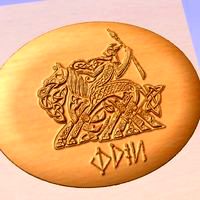
odin wotan odino norse god
...odin wotan odino norse god
cults
odin wotan cnc carving norse god
odin with horse sleipnir
cults
free
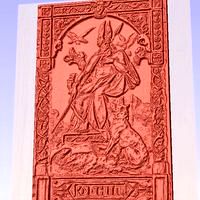
odin wotan odino norse god
...n wotan odino norse god
cults
bas relief cnc milling carving printing odin wotan odino norse god
cnc 3 axis milling or printing
cults
$2

odin wotan odino norse god 2
...odin wotan odino norse god 2
cults
bas relief cnc milling carving printing odin wotan odino norse god 2
cnc carving or printing
cg_trader
$4

Mimir God of War Keychain | 3D
... fix it esculpture character figure man gift keychain custom accessories souvenir god war head bust mimir kratos jewelry pendants
thingiverse
free

Odin Head Scan by Armorwing
...ent viking wooden carving of the norse god odin.
original wooden figurine can be found at the viking ship museum in oslo, norway.
thingiverse
free

Tree of Life (Yggdrasil) by Cidinus
...er and 6mm thick. 8mm thick with the letters and pictures accounted for.
marked with initials on back side. 1mm in cutout height.
3dwarehouse
free
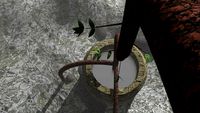
Well of Urd
...iddleheim #mythology #nidhog #niffleheim #norse #rocks #runes #scandanavia #tree #urd #vikings #water #well #worldtree #yggdrasil
cg_trader
$13

Odin Father of all statue - 7thCentury | 3D
...e wise, kind and cruel - perhaps representing human nature. odin was killed by fenrir the wolf at ragnarok, the doom of the gods.
cg_trader
free

Simboo the Odin
... odin, the supreme god of norse mythology green nordic odin osmar religion symbol sonnborn green vikings architectural decoration
thingiverse
free

Yggdrasil - Tree of Life
...yggdrasil - tree of life
thingiverse
yggdrasil - tree of life
Cncmodels4You
thingiverse
free

Jolly Roger by cncmodels4you Dec 8, 2019
...oger by cncmodels4you dec 8, 2019
thingiverse
jolly roger
by cncmodels4you dec 8, 2019
https://www.thingiverse.com/thing:4030342
thingiverse
free
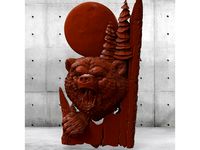
Bear and the moon for CNC by cncmodels4you
...n certain countries. the poaching and international trade of these most threatened populations are prohibited, but still ongoing.
thingiverse
free
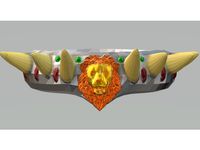
Lion Crown for Remixes by sleyvas
...collection (for cnc and remixes, any use) (https://www.thingiverse.com/thing:3908282) by cncmodels4you is licensed under the creative commons - attribution -...
thingiverse
free

Viking Crest by MavStallone
...easier to just download and print. absolutely awesome model cncmodels4you! i sized down the model significantly to go on...
thingiverse
free

Replacement Arms for Basilean Men-at-Arms by MDSW
...would fit the basileans nicely. the shield is from cncmodels4you (3946113), but for some reason thingiverse is not letting...
thingiverse
free

Centaur Warbonnet by sleyvas
...license.http://creativecommons.org/licenses/by/3.0/ swords and weapon collection for remixes (https://www.thingiverse.com/thing:3946109) by cncmodels4you is licensed under the creative commons - attribution license....
Yggdrasil
thingiverse
free

yggdrasil pendant
...yggdrasil pendant
thingiverse
yggdrasil pendant
thingiverse
free

Yggdrasil by Killerwurm007
...yggdrasil by killerwurm007
thingiverse
yggdrasil mosaik
thingiverse
free

Yggdrasil - Tree of Life
...yggdrasil - tree of life
thingiverse
yggdrasil - tree of life
unity_asset_store
$40

The Wonders of Yggdrasil
...ow with the the wonders of yggdrasil asset from aquarius max. find this & other fantasy options on the unity asset store.
unity_asset_store
$5
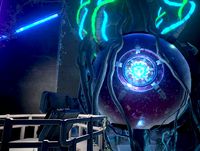
Yggdrasil Vault
...vate your workflow with the yggdrasil vault asset from vrdrmz. find this & other sci-fi options on the unity asset store.
thingiverse
free

yggdrasil by copanto
...yggdrasil by copanto
thingiverse
a stilish yggdasil tree, for you to readi to print and modify.
unity_asset_store
free
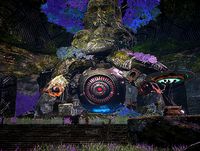
Yggdrasil: Tree Of Life
...sil: tree of life asset from cristhian mauricio rubiano. find this & other environments options on the unity asset store.
thingiverse
free

Tree of Life (Yggdrasil) by Cidinus
...er and 6mm thick. 8mm thick with the letters and pictures accounted for.
marked with initials on back side. 1mm in cutout height.
thingiverse
free

Phone holder : Yggdrasil by Schwebee
...hone holder : yggdrasil by schwebee
thingiverse
great looking with wood filament, switch the file on the side before printing .
thingiverse
free
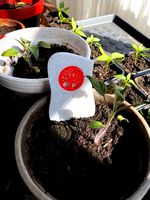
Runestone Yggdrasil by Eriksson1
...esk fusion 360
[slicer] flashprint
[printer] flashforge adventurer 3
[material] red pla & esun marble pla
[size] 100~65~10~
Oak
3ddd
$1

OAK
...oak
3ddd
производство: италия,
фабрика: oak industria arredamenti
3ddd
$1

OAK
...oak
3ddd
oak
стул oak sc1021 темное дерево светлая кожа.модель выполнена по чертежам или фотографиям с соблюдением всех размеров.
3ddd
free
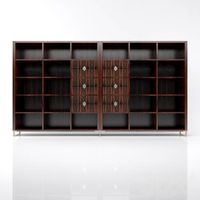
стеллаж OAK
...стеллаж oak
3ddd
oak
стеллаж фирмы oak
3ddd
$1

OAK sc
...oak sc
3ddd
oak
стол и стулья oak sc
3ddd
$1
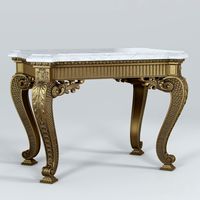
Столик Oak
...столик oak
3ddd
oak
столик oak table mg 4018
3ddd
free
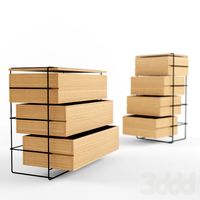
Clifford,Oak
... комод , oak , clifford
clifford,oak
3ddd
free
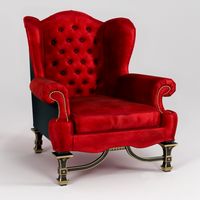
Кресло Oak
...кресло oak
3ddd
oak
кресло oak chair mg 3170
3ddd
$1

OAK 8252
... 8252 , fashion
журнальный стол oak, art. 8252
590x590x670
3ddd
$1
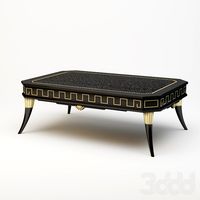
OAK 8222
... fashion , collezioni classic
журнальный стол oak art.8222
148x98x51
3ddd
$1

Oak 5031
...oak 5031
3ddd
oak
поликов около ляма
Cnc
3d_export
$5

Cnc 3D Model
...cnc 3d model
3dexport
cnc
cnc 3d model csiszar 61289 3dexport
3d_export
$190

CNC MILL 3D Model
...cnc mill 3d model
3dexport
inventor cnc mill render 3d
cnc mill 3d model 3dcad 96311 3dexport
3ddd
$1
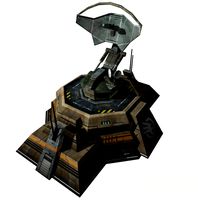
Командный Пункт (Из CNC TW)
...командный пункт (из cnc tw)
3ddd
cnc
модель командного пункта из игры cnc tiberium wars.
3ddd
$1

Мамонт GDI (Из CNC TW)
... gdi (из cnc tw)
3ddd
cnc , танк
модель знаменитого танка мамонт игры cnc tiberium wars.
3ddd
$1

БМП GDI (Из CNC TW)
...бмп gdi (из cnc tw)
3ddd
cnc , бмп
модель бмп из игры cnc tiberium wars(ea).
3d_export
$79

cnc milling machine
...tion, easy to use, can process complex spherical surface, cam, flat plate, keyway, arc groove, drilling, tapping and other parts.
3d_export
$8

DIY CNC Router 3D Model
...diy cnc router 3d model
3dexport
cnc; router; diy; homemade
diy cnc router 3d model maikeru86 58463 3dexport
3ddd
$1
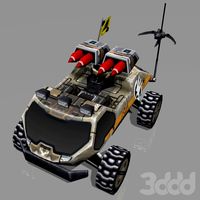
Машина Питбуль GDI (Из CNC TW)
...машина питбуль gdi (из cnc tw)
3ddd
cnc
модель питбуля из игры cnc tiberium wars(ea).
3ddd
$1

Танк Хищник GDI (Из CNC TW)
...к хищник gdi (из cnc tw)
3ddd
cnc , танк
модель танка хищник игры cnc tiberium wars(ea).
3ddd
$1
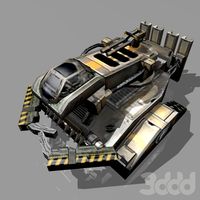
Жатка (Хорвестр) GDI (Из CNC TW)
...жатка (хорвестр) gdi (из cnc tw)
3ddd
cnc
модель жатки (хорвестора или сборщика) из игры cnc tiberium wars(ea).
Tree
3d_ocean
$9
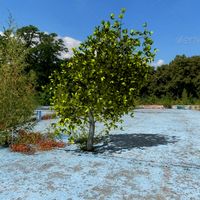
tree
...tree
3docean
textured tree
textured tree
3d_ocean
$9
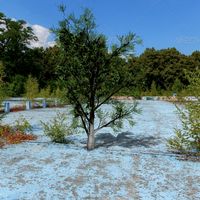
tree
...tree
3docean
textured tree
textured tree made with cinema4d
3d_ocean
$9
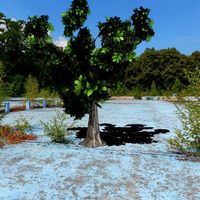
tree
...tree
3docean
cinema4d textured tree
textured tree made with cinema4d
3d_export
$5
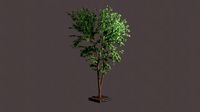
tree
...tree
3dexport
tree
archibase_planet
free
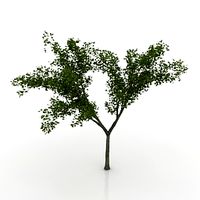
Tree
...tree
archibase planet
tree maple tree maple
maple tree 5 - 3d model (*.gsm+*.3ds) for exterior 3d visualization.
3d_ocean
$9
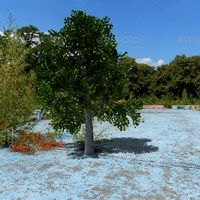
tree
...tree
3docean
textured tree
3d_ocean
$2
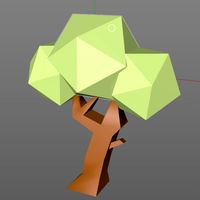
Tree
...tree
3docean
3d tree low poly
3d tree low poly model.
archibase_planet
free
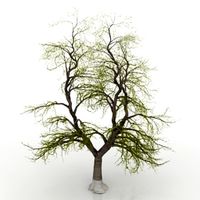
Tree
...tree
archibase planet
tree ash-tree ash
tree large ash-stripped n171012 - 3d model (*.gsm+*.3ds) for exterior 3d visualization.
3d_export
$5
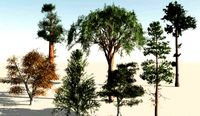
trees
...trees
3dexport
trees. nine varieties.
3d_export
$5
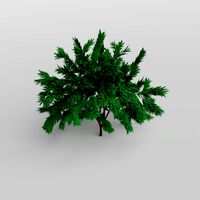
tree
...tree
3dexport
simple tree model
